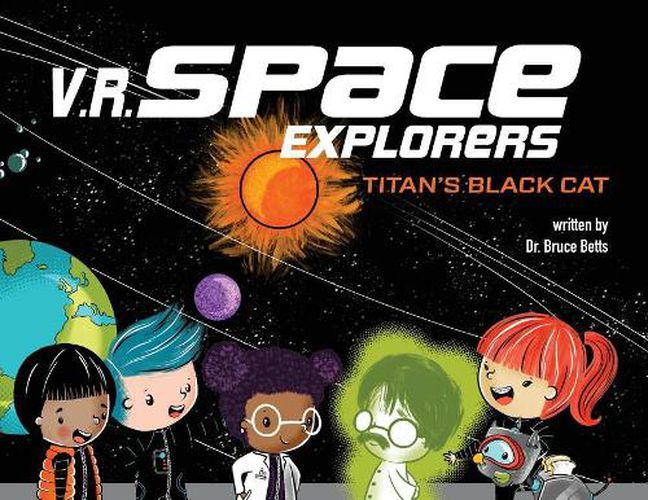Readings Newsletter
Become a Readings Member to make your shopping experience even easier.
Sign in or sign up for free!
You’re not far away from qualifying for FREE standard shipping within Australia
You’ve qualified for FREE standard shipping within Australia
The cart is loading…






This title is printed to order. This book may have been self-published. If so, we cannot guarantee the quality of the content. In the main most books will have gone through the editing process however some may not. We therefore suggest that you be aware of this before ordering this book. If in doubt check either the author or publisher’s details as we are unable to accept any returns unless they are faulty. Please contact us if you have any questions.
The V.R. Space Explorers set off to solve the mystery of Titan’s black cat. Each one of our young scientists has a job on the mission and the story is full of real science facts! With the help of the on-board Al (artificial intelligence) lead instructor, Dr. Bruce, they quickly realize they can’t fly to Titan to investigate in person. But no worries, our young explorers can travel to the farthest reaches of space to conduct their scientific research using the space station’s virtual reality explorer room. Before you know it, our young scientists are on their way (virtually, because they’d be way too old if they went in person!) to Saturn’s moon, Titan, to investigate the mysterious black cat transmission.
Dr. Bruce Betts is a planetary scientist who earned a B.S. in Physics and Math and an M.S. in Applied Physics from Stanford and a Ph.D. in Planetary Science with a minor in Geology from Caltech. He spent several years with San Juan Institute/Planetary Science Institute as a Research Scientist, and later Senior Research Scientist. He studied planetary surfaces, including Mars, the Moon, and Jupiter’s moons, using infrared and other data, and published several scientific papers on these subjects. He spent three years at NASA headquarters managing planetary instrument development programs to design spacecraft science instruments. He is currently the Chief Scientist and LightSail Program Manager for The Planetary Society, the world’s largest space interest group.
$9.00 standard shipping within Australia
FREE standard shipping within Australia for orders over $100.00
Express & International shipping calculated at checkout
This title is printed to order. This book may have been self-published. If so, we cannot guarantee the quality of the content. In the main most books will have gone through the editing process however some may not. We therefore suggest that you be aware of this before ordering this book. If in doubt check either the author or publisher’s details as we are unable to accept any returns unless they are faulty. Please contact us if you have any questions.
The V.R. Space Explorers set off to solve the mystery of Titan’s black cat. Each one of our young scientists has a job on the mission and the story is full of real science facts! With the help of the on-board Al (artificial intelligence) lead instructor, Dr. Bruce, they quickly realize they can’t fly to Titan to investigate in person. But no worries, our young explorers can travel to the farthest reaches of space to conduct their scientific research using the space station’s virtual reality explorer room. Before you know it, our young scientists are on their way (virtually, because they’d be way too old if they went in person!) to Saturn’s moon, Titan, to investigate the mysterious black cat transmission.
Dr. Bruce Betts is a planetary scientist who earned a B.S. in Physics and Math and an M.S. in Applied Physics from Stanford and a Ph.D. in Planetary Science with a minor in Geology from Caltech. He spent several years with San Juan Institute/Planetary Science Institute as a Research Scientist, and later Senior Research Scientist. He studied planetary surfaces, including Mars, the Moon, and Jupiter’s moons, using infrared and other data, and published several scientific papers on these subjects. He spent three years at NASA headquarters managing planetary instrument development programs to design spacecraft science instruments. He is currently the Chief Scientist and LightSail Program Manager for The Planetary Society, the world’s largest space interest group.